Where Do Experts Inject Botox For Migraines?

Where do they inject botox for migraines is the most frequently asked question by patients. The confusion normally exists between whether the Botox is injected in the facial zone or the head itself. To clarify all your doubts, here is a detailed blog that will tell where experts inject botox for migraines. Where Do Experts Inject Botox For Migraines? When you ask about where do they inject Botox for migraine, specialists say that the injection is driven strategically in precise spots. Experts use the Phase Research Evaluating Migraine Prophylaxis Therapy for the right injection pattern. It is considered as a normed method. The process consists of several injection sites targeted on vital areas in the throat and head. Following are the areas where botox is injected: Patients usually need follow-up treatments every 12 weeks. Why Have Migraines Become So Common In 2025? Several causes make migraines more frequent this year. One of the primary causes is stress. This is because people try to balance demanding employment, family obligations, and social engagements. Migraine triggers with poor diets including high caffeine and processed food consumption. Prolonged screen time and exposure to blue light from electronic devices have also been linked to more frequent migraines. The issue is also influenced by environmental issues including pollution, weather changes, and disturbed sleep patterns. Particularly in women, hormonal changes worsen the increasing incidence of migraines. Migraines have become a common neurological condition with the aid of these components affecting many of the people especially in the US. Botox For Migraines Though it was first used for its wrinkle-reducing effects, Botox is now approved by the FDA for use in chronic migraine therapy. It is especially helpful for people having 15 or more days of headache every month. According to medical professionals, at least eight episodes are defined as migraines. By blocking neurotransmitters that transmit pain signals to the brain, Botox stops migraines from starting. The intensity of the migraine often decides where they inject Botox for migraine.The process involves giving little amounts of botulinum toxin into particular sites around the head and neck. Before a follow-up appointment is required, Botox therapy for migraines usually lasts approximately three months. Many people find that their quality of life improves quite a bit. The Outcome After Botox Therapy For Migraine The Different Applications Of Botox Here are the other indications of Botox: Hazards of Botox for Headaches The Last Thoughts Botox might be your solution if you have chronic headaches and are searching for a secure and inexpensive treatment choice. By learning about where do they inject Botox for migraine can help patients know the treatment method beforehand. Many patients with migraines have found great relief, letting them live free of constant pain and irritations. We specialize at New U Med Spa in Botox therapies for migraines, so guarantee safe, experienced, and efficient treatment. Your situation will be assessed by our experienced team, which will produce a personalised therapy plan suited to you. Arrange a session with New U Med Spa today and start on the first stage toward a migraine-free life; don’t let migraines rule your life!
Dermal Fillers vs. Botox: Which One To Choose?
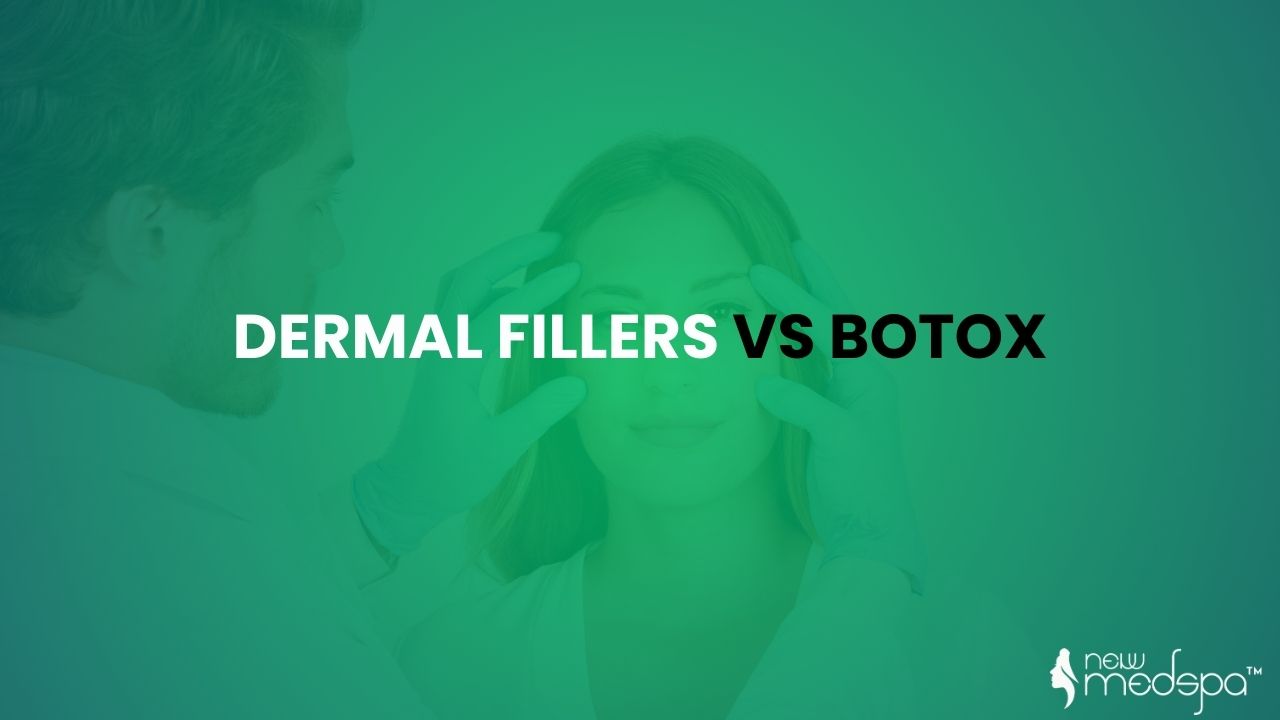
Dermal fillers vs. Botox are the most searched comparison. Both are familiar words in the field of cosmetic treatments for individuals trying to rejuvenate their appearance or enhance their natural features. Even though they work in somewhat different ways, both options are fast. Dermal fillers and Botox both are minimally invasive, and effective methods of reducing signs of aging. While both the treatments are the same then what is the difference? For those new to the world of beauty treatments, choosing among dermal fillers vs. Botox can be difficult. In this blog we will help you decide which solution best matches your requirements by defining their systems and clarifying the distinctions between the two. Dermal Fillers: An Instant Facial Rejuvenating Agent Dermal fillers are organic agents that are meant to enhance facial contours, eradicate wrinkles, and restore lost volume. They are injected deep in the skin. Dermal fillers are normally made of hyaluronic acid, a naturally occurring ingredient retaining fullness and moisture. Fillers usually help to address problems with hollow under the eyes as well as to enhance cheek, lips, and nasolabial folds. Botox: A Life-Saving Neurotoxin Botox in the medical industry refers to Botulinum Toxin. Botox is a toxin that slows muscle movement temporarily. It is widely used to reduce wrinkles. These are the ones that come from constant facial motions including frowning, squinting, or smiling. Usually, it is applied to address forehead wrinkles, crow’s feet, and nasolabial creases. Operating by blocking nerve signals to the muscles, Botox stops muscle contractions that generate wrinkles. Botox results usually last about 3 to 6 months. Still, the therapy can be repeated later. Unlike dermal fillers, Botox smooths out existing wrinkles and does not increase volume. Dermal Fillers vs. Botox: Major Differences Objective and Application Treatments Zones Active Ingredient and Processes Permanency and Performance Recovery And Side Effects Cost How to choose between Dermal Fillers vs. Botox? You just cannot decide which one to choose between dermal filler or botox. There are certain factors that validate the use of both of the treatments. Following are some aspects that need to be in consideration before making a choice between dermal fillers vs. Botox: Major Concerns Dermal Filler: Botox: Is the optimum answer for lines on the forehead and crow’s and feet brought up by facial expressions among others. Based on Age And Your Skin Color Botox: Younger adults would note fewer wrinkles than elderly ones with little volume loss if Botox were administered. Dermal Fillers: Dermal fillers would likely be more helpful for seniors or elderly with severe volume loss or very deep wrinkles. Maintenance Requirements Dermal Fillers: People seeking effects that last longer and need fewer follow-up might prefer dermal fillers. Botox: Botox could be a good choice if you don’t mind routine maintenance visits. Cost Considerations Dermal Fillers: They are more expensive. Botox: Botox demands more regular appointments but they are not unaffordable. The Final Verdict: As effective aesthetic therapies, dermal fillers vs. Botox will continue to have a debate! However, they have different uses. Botox is best for eradicating muscle-generated wrinkles, dermal fillers are excellent for volume restoration and facial contouring. Ultimately, your desired outcomes, particular concerns, and skin type will determine which one is best for you. At times, using both approaches could be recommended to offer a more attractive look. Always look for a professional opinion to guarantee you get the most suitable therapy for your situation. You will certainly seem more young and revitalized whether you prefer Botox, dermal fillers, or both.
Botox Around the Mouth Before and After Unlock the Secret to Youthful Mouth
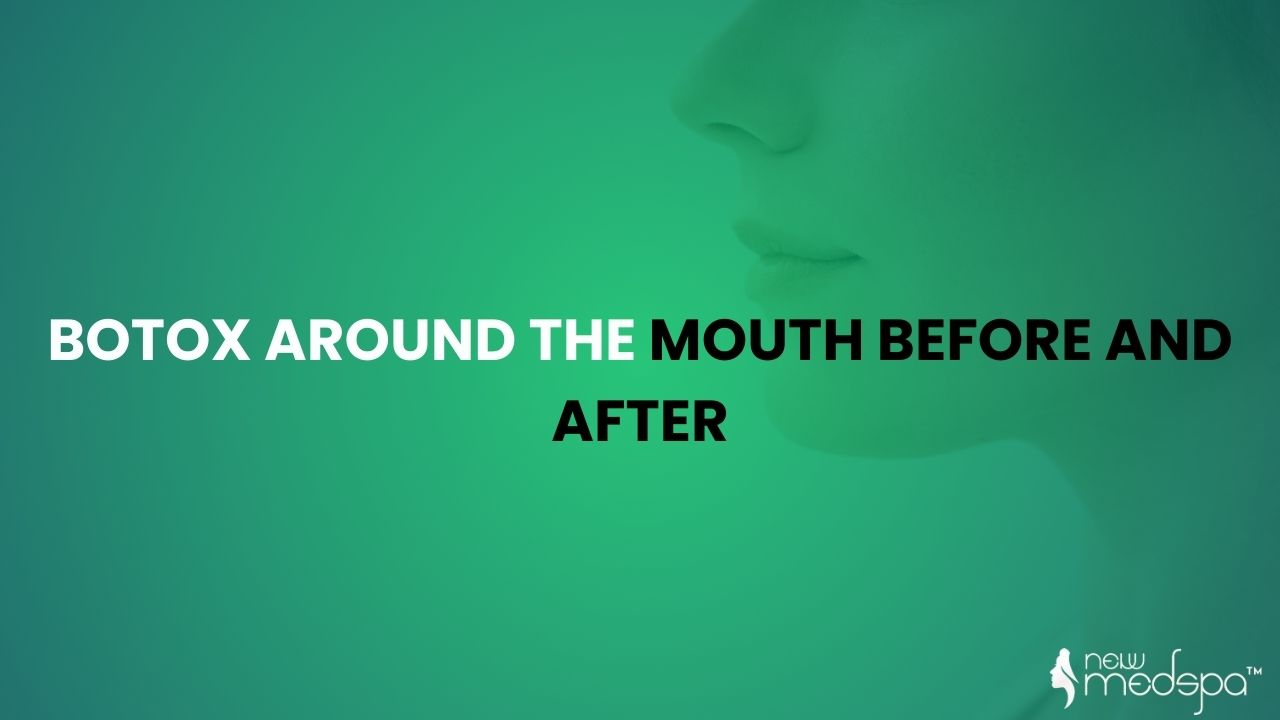
Botox around the mouth before and after results are beneficial for individuals who want to undergo Botox procedure. With the help of before and after transformation it is easy to understand whether Botox results are good or not. Botox is a non surgical cosmetic injectable treatment that is effective for facial wrinkles such as crow’s feet, bunny lines, frown lines, brow lines, forehead lines, laugh lines and chin. It is also becoming an increasingly popular treatment for the area around the mouth like smile lines and vertical lip lines. While you can expect best results after the Botox procedure, many people notice significant improvement. In this blog we will explore before and after changes of Botox around the mouth and everything about this procedure that you need to know. Botox Around the Mouth Before and After Botox around the mouth before and after transformations are discussed below that help you to understand effects of Botox before and after the treatment. Lip Lines (Smoker’s Lines) Lip Lines are one of the common concerns individuals experienced in the world. As they age, the appearance of vertical lines around the lips is seen. These lines can make the lips look thinner and can even affect lipstick application, as lipstick can bleed into the lines. Marionette Lines Botox around the mouth before and after for marionette lines is discussed below. Marionette lines are often because of aging, these lines affect the mouth and begin to droop, creating a more somber or sad look. It can be because of skin laxity or muscle movements. Gummy Smile Botox around the mouth before and after for gummy smile results are important to understand for individuals who are suffering from gummy smiles. A gummy smile is characterized by excessive gum exposure when smiling. Botox works on reducing the amount the upper lip rises when smiling to avoid gummy smiles. Downturned Mouth Corners Botox around the mouth before and after results in managing downturned mouth corners shows how much percent Botox can address this issue. When we age the muscles at the corners of the mouth can pull downward, causing the person to appear sad or angry, even when they’re happy. Botox Around the Mouth Before and After Procedure Botox around the mouth before and after the procedure is simple and quick. The procedure of Botox around the mouth focuses on treating fine lines, deep wrinkles, and certain muscle associated concerns. Following are the steps in the Botox procedure. Summary Botox around the mouth before and after results will be more effective when the procedure is performed by an experienced health care provider. Botox is an advanced non surgical cosmetic treatment currently Botox becoming popular for mouth related concerns. Because of an underactive mouth many individuals are conscious and have low confidence. Botox is the best option for them to restore their confidence and beautiful mouth appearance. We have discussed in detail the before and after results of Botox around mouth.
Botox Alternatives: Botox vs. Dermal Fillers
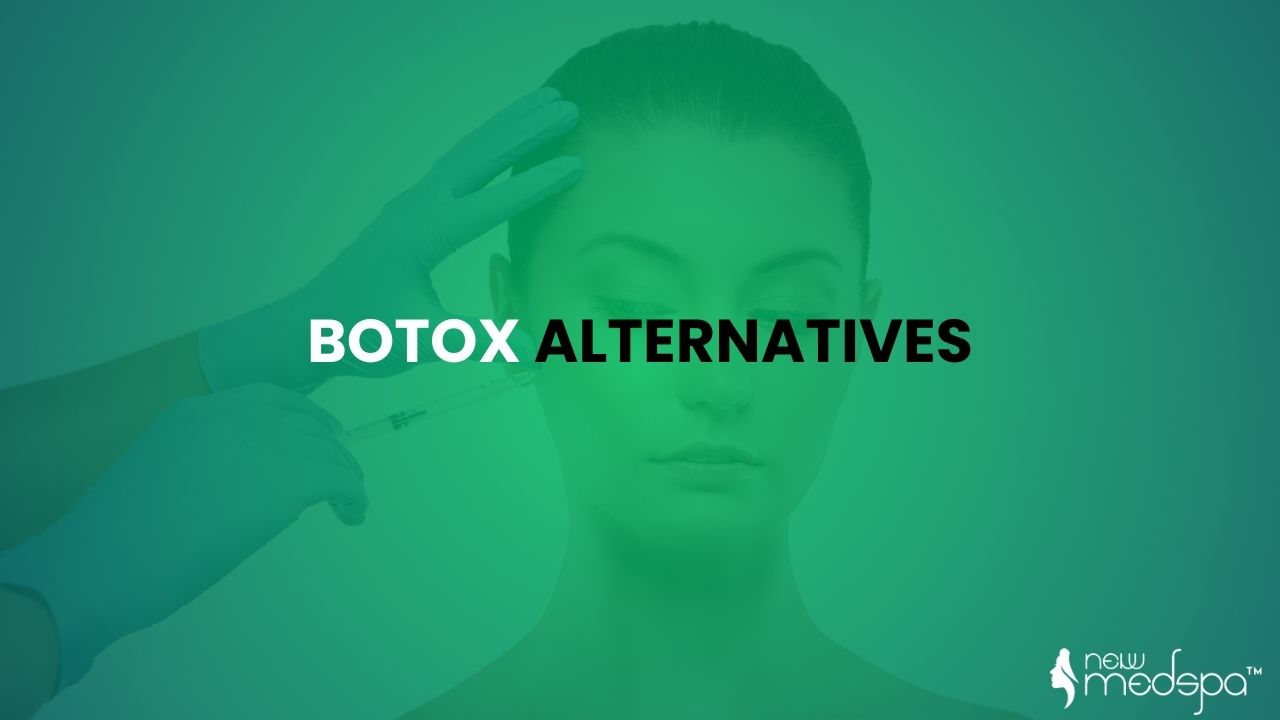
In the anti-aging industry dermal fillers are a good option as Botox alternatives. Botox and dermal fillers are the most trending and most popular choices to get a natural and younger appearance with rejuvenated skin. Both treatments play a vital role to target the skin’s signs of aging but in different context. In this blog we will explore both techniques, benefits, side effects, and comparison between both of them. What are Botox and Dermal Fillers? Here we will define the both treatments and see the difference that dermal fillers are as Botox alternatives. Botox: Botox (botulinum toxin) is a basically neuromodulator and it is utilized to block nerve signals, preventing them from contracting and temporarily paralyzing the muscles that may cause the wrinkles. This is considered as a good option for dynamic wrinkles treatment that may be caused by repetitive facial expressions like frown lines, crow’s feet, and forehead lines. Dermal Fillers: Dermal fillers are basically gel-like substances that are based on hyaluronic acid (HA), which is a natural substance and already found in the body that is a rich source of moisture in the body. These injectable fillers help to counter the skin’s aging signs like deep wrinkles, fine lines, sagging skin, and volume loss and help to reduce the aging signs and restore the volume loss. How Do They Work? Botox and dermal fillers both are injectable processes; they have the same technique but different working methods. Here we will see that dermal fillers work as Botox alternatives. Botox: Botox is an injectable process, when it is injected into the muscles under the skin it helps to block the nerve signals and prevent the muscles from contracting. It temporarily paralyzes the muscles which are responsible for wrinkles. Botox is the best treatment for dynamic wrinkles that may appear due to muscle movement like crow’s feet, frown lines, and forehead lines. Dermal Fillers: Dermal fillers are injectable treatments, filler is basically a gel-like substance that contains hyaluronic acid, which is a natural substance and already present in the body. When it is injected into the specific area, it counters the skin aging concerns like wrinkles, fine lines, sagging skin, and volume loss and reduces the wrinkles and fine lines and also helps to restore volume loss. It also has a vital role to stimulate the collagen production that improves skin texture and it gradually enhances day by day. What are the Treating Areas? Botox and dermal fillers, both are treated at specific areas and target the skin’s aging concerns. Botox: Dermal Fillers: What are the Results of Botox and Dermal Fillers Treatments? Both treatments have precise outstanding results and here we compare those dermal fillers as Botox alternatives. Botox: Botox is an injectable treatment that provides visible results but it may take 3 to 7 days for noticeable results. The result may exist for 3 to 4 months and need repeated sessions to maintain the results. Dermal Fillers: Dermal fillers are injectable treatments that provide immediate results which gradually improve day by day. But different fillers have different results and it depends on the filler types. But the overall result may exist for 6 months to 2 years. What are the Benefits of Botox and Dermal Fillers? There are multiple benefits associated with both treatments that define how dermal fillers work as Botox alternatives. Botox: Dermal Fillers: What are the Side Effects of Botox and Dermal Fillers? There are chances of some side effects or risk factors from both treatments but it may be treated easily. Botox: It is usually a safe procedure but there is a chance of some side effects like swelling, bruising, and redness at the injected area but it is temporary and may reduce within a few days. There is also the possibility of some infection or allergic reaction but it is rare and may be treated with proper aftercare and recommended instructions of the consultant. But there is one more issue which will appear after the procedure is drooping eyelids or eyebrows but it may be caused due to unprofessional practitioners because it happens when the substance is not spread evenly. Dermal Fillers: Dermal fillers are injectable and considered as a safe procedure but there is a chance of some side effects like swelling, bruising, and redness at the treated area but it is temporary and may reduce within a few days. Sometimes infection or allergic reaction also may be noticed but it is very rare and can be treated with aftercare treatments. There is also a chance of undesirable results like lumpiness and asymmetrical shape but it may happen due to non-professionalism of the practitioner. Concluded Thoughts: Botox and dermal fillers both are the most popular treatment for skin’s aging concerns and help to counter them and achieve natural and younger appearance with rejuvenated skin. Both treatments are non-surgical and injectable and have minimal downtime. So they both have their own unicity and properties, we can’t compare them in a race. The choice of one is depending on your targeted goals, it is preferable according to your desire or your need. So it is very true that dermal fillers are Botox alternatives that help to fight against aging signs and provide rejuvenated skin with a natural and younger appearance in minimum downtime.
Different Types of Dermal Fillers
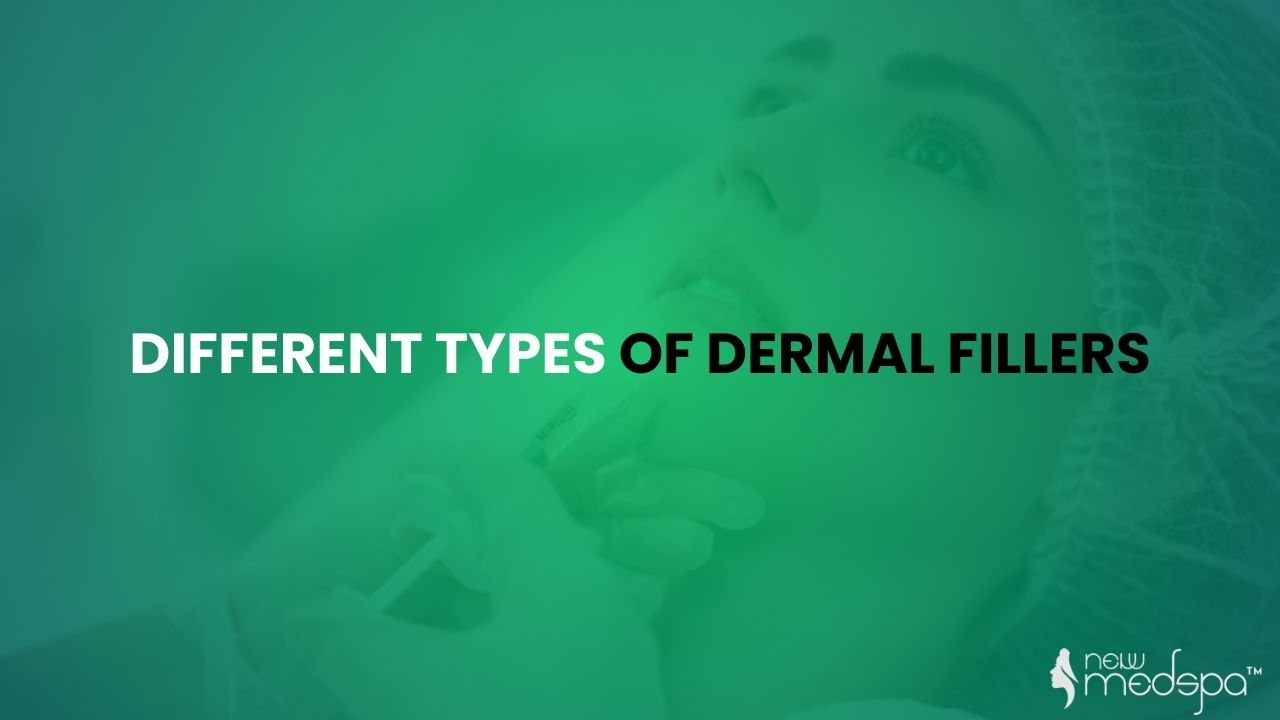
Different types of dermal fillers come in various formulas, all designed to make your skin youthful and radiant again. Some are developed specifically to help smooth deep facial wrinkles while experiencing outlines or enriching the features of the whole face. Beneath, stages the various different types of Dermal fillers, their characteristics and potential risks as well as appropriate places to use each type of improver just for your needs. TOP 5 DIFFERENT TYPES OF DERMAL FILLERS: Dermal fillers in this category, group together in accord with their composition and lasting power plus whether they constitute injectable or non-surgical treatments. Hyaluronic acid is a naturally occurring substance in the skin, and at its core is a molecule capable of attracting and holding on to 1000 times its own weight in water. This all hydrates the skin and keeps it looking plumped up. HA fillers are popular because they have a good safety record, can be dissolved if needed, and work well on the face without side effects. How it works: HA fillers give an immediate volume boost by binding water molecules to the skin and improving texture and elasticity. They can be busted down with hyaluronidase then if necessary. Preferred brands: Juvederm, Restylane, Belotero Best choices for: How long they last: 6-18 months, but that varies according to the individual metabolism of the patient and which area has been treated with which product. Pros: It looks natural, very little down-time, reversible. Cons: Regularly requires renewals, heavy swelling or contusing may occur, sporadically you get a lump here or there for a while. Different types of dermal fillers Calcium hydroxylapatite is also one of them, Calcium hydroxylapatite is a mineral-like material found in human bones. It stimulates the skin’s natural collagen production processes but also provides for structure and support. How it works: CaHA fillers give an immediate lift and the skin over there keeps more fulfilling its own collagen over time; making the results even more sustainable. Preferred brand: Radiesse Best for:Deep wrinkles such as nasolabial foldsCheek and jawline enhancement. Best suited to: Longevity: About a year to 18 months. Thanks to stimulation of the patient’s own collagen production, effects continue to improve over time. Pros: Extended period lasting, promotes production of collagen which was lost, gives natural volume. Cons: Not reversible, may produce a lumpiness of the area if injected improperly, swelling and rashes may occur. Poly-L-lactic acid is an artificial substance that is natural and biodegradable and triggers the body’s own collagen production process. How it works: Unlike immediate-volume fillers, PLLA fillers work over time, gradually improving skin quality and restoring lost volume. Brand name: sculptra Best suited to: Longevity: Up to 2 years; multiple sessions are recommended to optimize results. Pros: Stimulation of the body’s own collagen, lasting effects, gradual improvement. Cons: Requires multiple treatments, results will take a while to appear, risk of nodules if not properly massaged after injection. PMMA fillers contain biocompatible microspheres that provide structural support while stimulating long-term collagen production. How it works: The microspheres will not shift locations, allowing for permanent volume increases and reducing deep wrinkles. Brand Named: Bellafill Best suited to: Longevity: 5 + years, making it one of the long-lasting fillers. Pros: Lasting results, effective on deep wrinkles, large acne scars. Cons: Requires a skilled injector, not readily reversed potential for granulomas and long-term difficulties This involves taking fat from another part of the patient’s body (usually the abdomen or thighs), processing it, and then injecting it into the desired areas as a volume replacement. How it works: Since the filler is composed of the patient’s own fat cells and not some other substance, there’s no risk of allergic reaction. However, there may be loss of some fat over time as it is reabsorbed by the body. Best for: Longevity: Permanent, but feeding sessions may be necessary as some fat naturally absorbs. Advantages: Long-Lasting, uses natural tissue instead of synthetic substances. Disadvantages: Surgical operation is minor and fat survival rate is subject to change, recovery time is longer than synthetic fillers. WHAT TO EXPECT DIFFERENT TYPES OF DERMAL FILLERS TREATMENT: IMMEDIATE AFTERCARE RESULTS OVER TIME Regular sessions for maintenance are required with HA and CaHA fillers. AFTERCARE TREATMENT FOR DIFFERENT TYPES OF DERMAL FILLERS long-term care following treatment ensures the success of this and minimizes any after effects: IMMEDIATE POST-TREATMENT CARE WHAT TO AVOID LONG-TERM MAINTENANCE ADVICE Care in this way means you can enjoy long-lasting, more natural looking results. If you feel constant swelling, pain, or unusual side effects, please seek advice from a medical practitioner right away. DERMAL FILLERS VS. BOTOX While they are both nonsurgical treatments that help reduce signs of aging, the two procedures work differently. Different types of Dermal fillers add volume to different areas wherever this has been lost through aging: they smooth off wrinkles and give an enduring fullness back to your cheeks (etc). They are great for deep wrinkles, sunken cheeks, and lip enhancement. In contrast, botox relaxes facial muscles so that dynamic wrinkles caused by repeated expression such as brow’s lift, crow’s feet or forehead lines can not develop. Dermal fillers are the immediate solution with effects that last from 6 months to 5 years. On the other hand Botox will take about 2-3 days before it starts to work and typically lasts for 3-6 months. The choice depends on what you are worried about fillers adding volume, whereas Botox is best for wrinkle prevention. Final Thoughts There are different types of dermal fillers available from hyaluronic acid fillers for moisturizing to long-acting options such as PMMA and autologous fat transfer so it is essential that you choose the most appropriate one in accordance with your own needs and objectives. To boost the volume of your face, reduce the appearance of wrinkles and regain a youthful complexion, have a facelift with Dermal Fillers. There are different types of dermal fillers chosen wisely under the guidance of a skilled provider, acceptable results are obtained which look good and are just right
Vitamin IV Therapy Pros and Cons
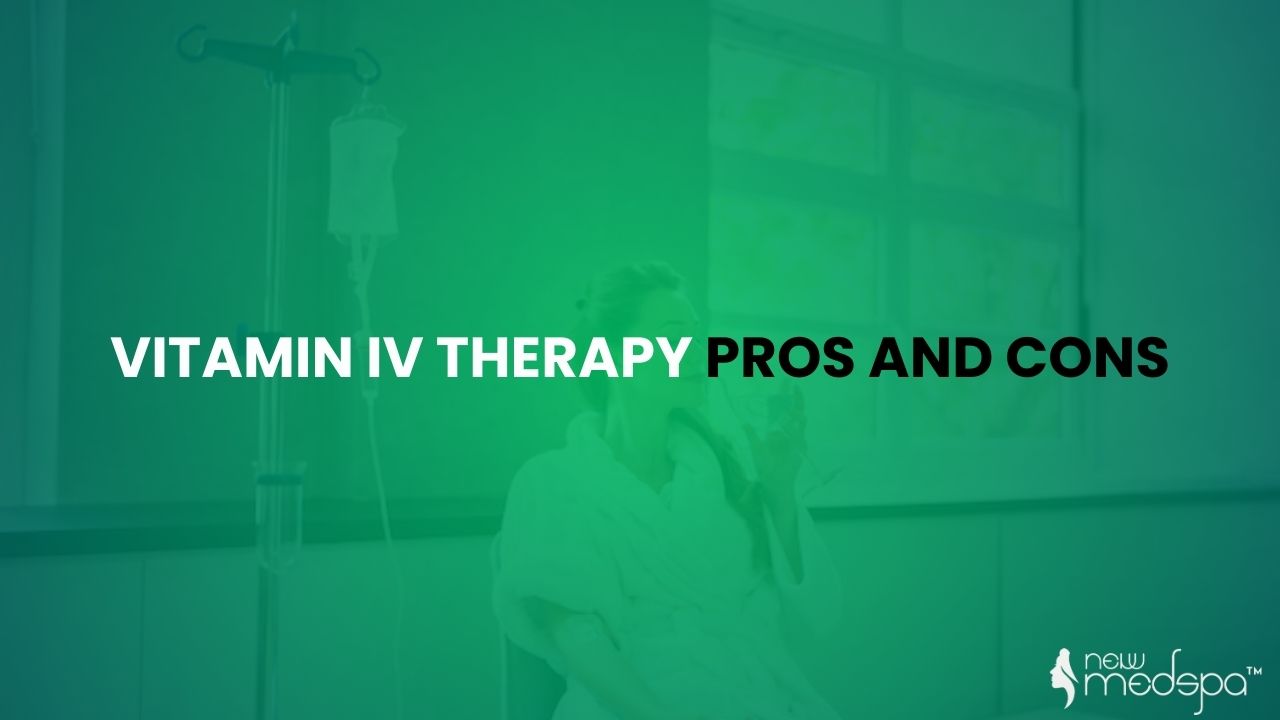
Vitamin IV Therapy Pros and Cons have become widely popular over the past few years among wellness enthusiasts, movie stars, and professional sports players. It claims to provide quick hydration, improved immunity, and potent energy by sending important nutrients straight into your blood. But is it as effective as it sounds, is simply another health fad. In this blog, we are going to explore the Vitamin IV Therapy Pros and Cons, its benefits, risks and if it is worth giving it a shot. If you are thinking about this treatment, continue reading to make the right decision. What is Vitamin IV Therapy? Vitamin IV therapy is a type of medical treatment in which vitamins, minerals, and other nutrients are administered via an intravenous (IV) drip directly into the bloodstream. Since this system avoids going through the digestive system, it leads to faster and more efficient absorption of nutrients than from an oral supplement. It is frequently used for daily hydration, immune system support, energy, and recovery from illness or fatigue. Vitamin C, B-complex vitamins, magnesium, zinc and antioxidants like glutathione are common ingredients. Athletes, those with nutrient deficiencies, and people desiring enhanced overall wellness often pursue vitamin IV therapy. Pros of Vitamin IV Therapy Boosts Nutrient Absorption Some of the advantages of Vitamin IV Therapy Pros and Cons include its higher absorption rate. Vitamins consumed orally have to go through your digestive system, where absorption is not always complete. Pros and Cons Of Vitamin IV Therapy Guarantees 100% bioavailability of essential nutrients to the body. Enhances Hydration Dehydration can cause lethargy, headaches, and difficulty concentrating. Vitamin IV Therapy Pros and Cons. This technique sends fluids straight to the veins, making it a great way to hydrate the body quickly, ideal for travellers, athletes or anyone recovering from illness. Boosts Immune System An immune system that works strongly promotes well being. IV drips high in Vitamin C, Zinc, and B-complex vitamins enable the body to target infections, including the inflammation associated with illness, speeding recovery from ailments, including flu or colds. Improves Energy Levels Burnout and stress can drain you physically. Your IV formula with B vitamins, magnesium, and amino acids is well-rounded to help stabilize energy, lower stress, and improve cognition. Supports Skin Health Here is a closer look at Vitamin IV Therapy Pros and Cons for healthy, glowing skin. Glutathione, vitamin C and biotin, among many others, help boost collagen, detox the body, and protect against oxidative stress to deliver better skin. Speeds Up Recovery Whether you’re recovering from a workout, surgery or a hangover, Vitamin IV Therapy Pros and Cons replenish lost nutrients, reduce inflammation and restore the body’s natural balance much quicker than conventional methods. Customizable Formulas Unlike Traditional Vitamin IV Therapy Pros and Cons which can be formulated according to the individual’s health requirement. Immune support, anti-aging benefits, athletic recovery: your IV drip can be tailored to what you need. May Aid in Weight Loss Some IV drips are also laced with l-carnitine and alpha-lipoic acid, both of which help the body to metabolize and burn fat. Vitamin IV Therapy Pros and Cons won’t make you lose weight by itself, but can make a healthy lifestyle healthier. Cons of Vitamin IV Therapy Expensive Treatment The cost is one of the most significant disadvantages of Vitamin IV Therapy Pros and Cons. A single session can cost $100 to $500, depending on the formulation and location. It can be expensive for regular treatments, which is out of reach for many. Not FDA-Regulated The reason Vitamin IV Therapy Pros and Cons is considered strictly by the FDA, unlike prescription medications. As a result, the safety, quality, and efficacy of treatments can differ from provider to provider, possibly leading to increased complications. Potential Side Effects Although Vitamin IV therapy generally is safe, some of its pros and cons may cause side effects such as So in a balanced diet, there is no need for Vitamin IV Therapy Pros and Cons. The process of absorbing vitamins from food is efficient so Vitamin IV Therapy Pros and Cons are not needed, except in cases of a medical condition or severe deficiency. Risk of Overloading Nutrients Intake of some vitamins in excess can cause toxicity! Excessive Vitamin A can damage the liver; excessive Vitamin C can produce kidney stones, for example. Nut and seeds are rich in omega-3 and vitamin E, zinc, and generate. Temporary Effects Despite the fact that Vitamin IV Therapy Pros and Cons provides sudden energy, the effects normally do not last long. The body expels any excess vitamins, so you may have to do regular sessions to retain benefits. Not a Cure-All Solution Although it has numerous advantages, Vitamin IV Therapy Pros and Cons are not a substitute for a healthy diet, regular exercise, and a healthy lifestyle. It’s most effective as an adjunct, not a core health strategy. How Does Vitamin IV Therapy Work? Vitamin IV therapy is a treatment that involves the insertion of a small catheter into a vein by a medical professional, enabling a custom blend of vitamins, minerals, and other vital nutrients to flow directly into the bloodstream. Taking supplements sublingually avoids the digestive tract, leading to more absorption and quicker onset of effects than oral supplements. The infusion usually takes 30 to 60 minutes, during which patients can kick back in a comfortable environment while their bodies receive an immediate nutrient boost. Who Should Consider Vitamin IV Therapy? While Vitamin IV Therapy is not for everyone, certain individuals may benefit from it, including. For faster recovery and hydration. Those with malabsorption issues like Crohn’s disease or celiac disease. For increased energy and immunity. To speed up healing and boost the immune system. Final Verdict The answer depends on the individual’s health goals and financial means. Vitamin therapy may be beneficial when you suffer from nutrient and hydration deficiencies or need that energy boost. But for people on a well-rounded diet, the benefits may not outweigh the steep price tag. Pros, great nutrient absorption, energy booster, improves immunity, good for skin health. Pros, High cost, potential side effects, temporary effects, unregulated by the FDA.
Botox in Chin Before and After Exploring the Effects of Chin Botox
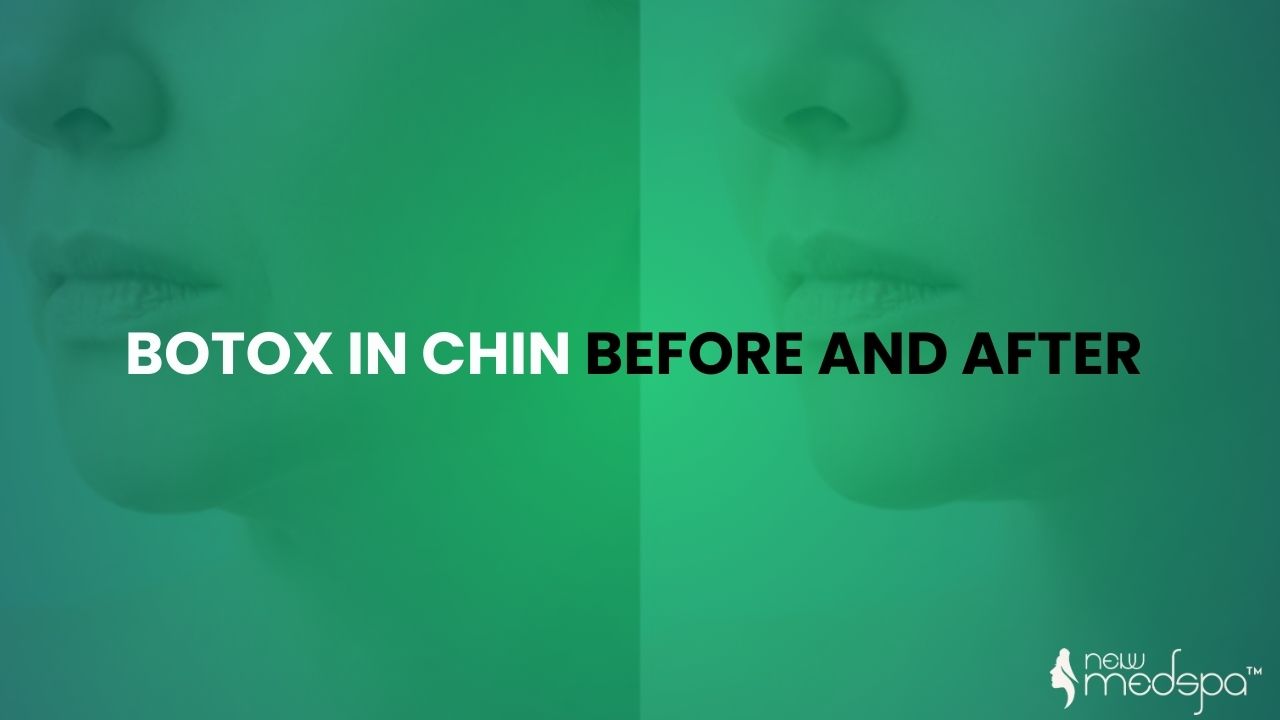
Botox in chin before and after helps people to understand changes that can be noticed before and after the Botox procedure. Botox is a well known cosmetic treatment, and has become most popular in the world of aesthetics treatments. Lots of people associate Botox with smoothing out forehead wrinkles or crow’s feet, while it is beneficial for many areas of the face. When we talk about chin Botox it is also in demand nowadays. Whether you’re seeking a smoother, more defined chin or looking to address a “dimpled” or “bumpy” chin, Botox can offer impressive results to an attractive chin. In this detailed guide, we will understand the Botox in chin before and after effects, and all about chin Botox. With the help of this blog you’ll have a thorough understanding of Botox for the chin and whether it could be the right option for you. Botox in Chin Before and After With the help of Botox in chin before and after results we can see the changes that can occur before and after the Botox treatment. Let’s explore the typical changes patients experience before and after Botox treatment in the chin Botox. Before After Botox in Chin Before and After Procedure Botox in chin before and after is low time consuming and safer treatment than surgical procedure. People can get the best results when a procedure is performed by an experienced health care provider. Here are some steps in the procedure of Botox in the chin. Why Get Botox in the Chin? Botox in chin before and after is an interesting topic for discussion that helps individuals to understand the Botox results. While, people seek chin Botox for various cosmetic and functional reasons. Smoothing Chin Dimpling: Botox reduces the bumpy, uneven texture caused by muscle contractions. This procedure is effective for smoothing chin dimpling.Softening a Chin Crease: Botox in chin minimizes the horizontal crease that can develop between the lower lip and chin. Botox is effective for the enhancement of the chin crease.Improving Facial Symmetry: Botox in the chin helps balance the overall facial appearance and improve facial symmetry.Enhancing Jawline Definition: Can subtly redefine the chin and jawline for a more sculpted look.Preventative Aging: With the help of Botox treatment you can stop muscle overuse that leads to early aging signs. Conclusion Botox in chin before and after changes are discussed above given information that helps you understand effects of Botox before and after the treatment. Chin Botox is a safe, effective, and non surgical option to achieve a smoother, more balanced facial expression. People who are aiming to reduce dimpling, soften lines, or enhance overall symmetry, Botox is an innovative option for them. Before considering Botox in chin it is important to consult with a qualified provider to discuss your goals and ensure the treatment is right for you. With proper care, chin Botox can offer natural-looking results that boost confidence. If you are ready for smoother, more refined results Book a consultation today at New U Med Spa and take the first step toward your aesthetic goals.
Hair Botox Before and After From Frizzy to Fabulous
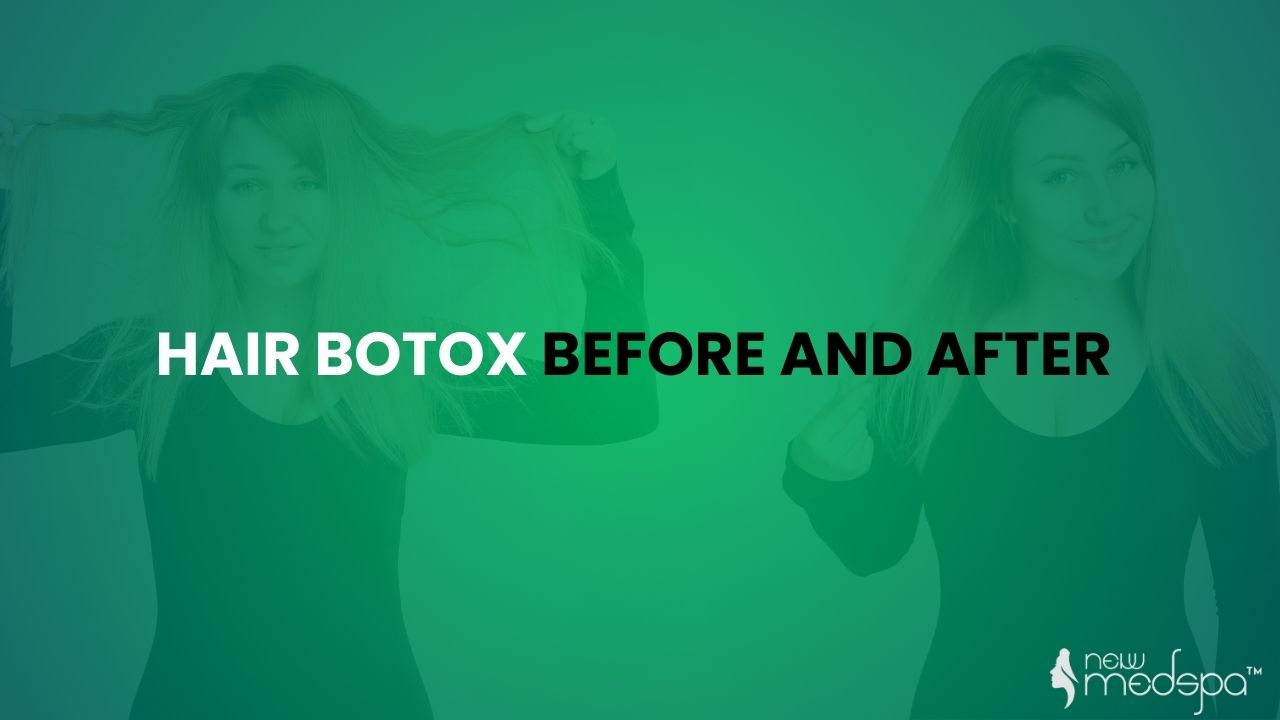
Hair Botox before and after is a proof of Botox treatment after the procedure. Hair Botox is an Latest treatment that has suddenly gained popularity in the world because of its ability to transform hair and restore its youthful shine, smoothness, and healthy hair line. Despite the name Botox, it doesn’t use actual botulinum toxin like facial aesthetics. Instead, it involves a deep conditioning treatment aimed to repair damaged hair, reduce frizz, and restore shine and softness. If you want to undergo hair Botox, it is essential to know about Botox for hair before and after results. In this guide we will discuss all about hair Botox that helps you whether Botox is good for you or not. Let’s have a detailed look at Botox treatment in hair restoration. Hair Botox Before and After Transformation Hair Botox before and after is the most exciting part of Hair Botox treatment. Let’s take a look at what to expect before and after the treatment. Before Hair Botox After Hair Botox Hair Botox before and after results are discussed above while the results can vary from person to person. Botox is a safe treatment, it grows your hair naturally. Benefits of Hair Botox Hair Botox before and after can be understood by the benefits of treatment. Hair Botox offers a wide range of benefits, some of the top benefits are following. How to Maintain Hair Botox Before and After Results Hair Botox Before and After results will be best if proper care is given. To ensure that you get the most out of your Hair Botox treatment benefits and maintain your results, follow these maintenance tips. Conclusion Hair Botox before and after helps individuals to understand before and after results of Botox treatment. Botox is the best treatment for hair loss. So anyone who want to improve and have smooth, shiny, healthy hair, Hair Botox treatment is a very good option. Treatment works to restore hair and balance moisture, resulting in more manageable, voluminous, and eliminators frizzy hair. No matter if your hair is dry, damaged or frizzy, Hair Botox can be a life changing treatment. If you’re seeking a revolution, Hair Botox could be the solution for your hair troubles. Schedule an appointment with a qualified medical doctor and prepare to walk out with a completely new and healthier head of Hair!
Crows Feet Botox Before and After A Look at Botox Results
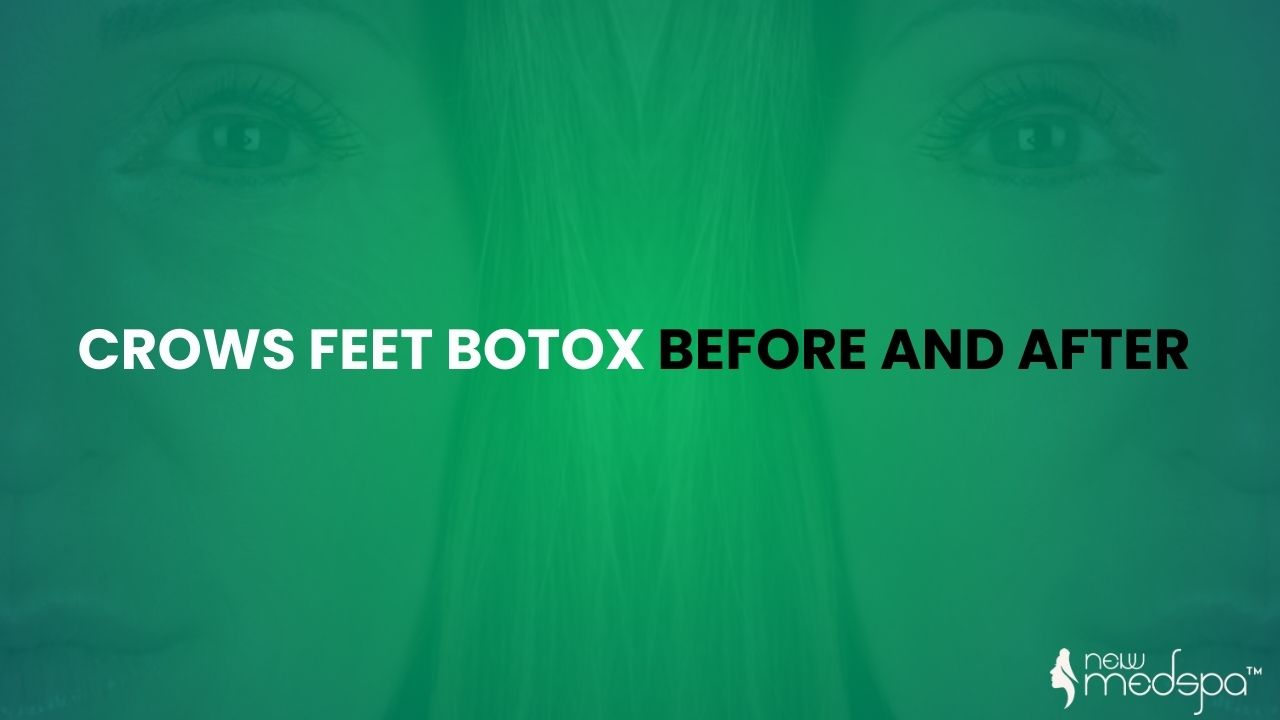
Crows feet Botox before and after results means transformation that can be expected from Botox before and after the procedure. Crows’ feet are the most common sign of aging, these fine lines seen around the outer corners of the eyes. Crows Feet can be formed because of facial tics, sun exposure, and the natural decrease in collagen and elastin as we age. There are many treatments for these fine lines, But is the most advanced and non surgical that is beneficial to address crows feet. If you want to undergo Botox for crow’s feet this blog will help you to understand all about crows feet Botox and its before and after results. Crows Feet Botox Before and After Results Crows feet Botox before and after results are discussed below. Before Botox for crow’s feet may appear as fine lines that become more noticeable when smiling or squinting. After some period these lines can deepen and make you look older or more tired. Individuals always notice crow’s feet as early as their late 20s or early 30s. Following are some signs that can be noticed before Botox for crow’s feet. Before Crows Feet Botox After Crows Feet Botox Crows feet Botox before and after results can be different from person to person, while After Botox injections for crow’s feet, you’ll notice a significant improvement in the smoothness and overall appearance of the skin around your eyes. Here are some noticeable results after the Botox procedure. Crows feet Botox before and after results will be more pronounced when Botox will be performed by an experienced and skilled healthcare provider. How Botox Works for Crow’s Feet Crows feet Botox before and after help people to make a decision for selection Botox procedure whether it is beneficial or not. Botox is a brand name for botulinum toxin type A, is a purified protein that temporarily paralyzes muscles by blocking the nerve signals that cause muscle contraction. In cosmetic treatments, Botox is injected into targeted areas of the skin to smooth out wrinkles and fine lines. Botox is one of the most popular non-surgical cosmetic procedures due to its effectiveness, minimal downtime, and relatively quick results. Botox for crow’s feet works by temporarily paralyzing the muscles that are responsible for the fine lines and wrinkles around the eyes. When their muscles are relaxed, improvements are seen such as skin smoothness, minimum appearance of crow’s feet, natural looking, more youthful look, and improved confidence. Benefits of Botox for Crow’s Feet Crows feet Botox before and after benefits are discussed below, while this is simple injectable treatment, individuals who are finding low risky treatment Botox is best for them. Botox Side Effects Following are some side effects of Botox for crow’s feet. Final Thoughts Crows feet Botox before and after results are deeply discussed in above given information. Before the Botox for crow’s feet people notice fine lines around the eyes. After the Botox procedure many people notice the best improvements such as reduction in wrinkles, youthful and refreshed appearance, natural results, and skin smoothness. Procedure of Botox is start with consultation then preparation like cleaning of treatment area, after the preparation the Botox will be injected into the targeted muscles. The most important thing is to always choose an experienced and board certified cosmetic doctor.
Vampire Facials: Benefits, Process, Side Effects and Much More
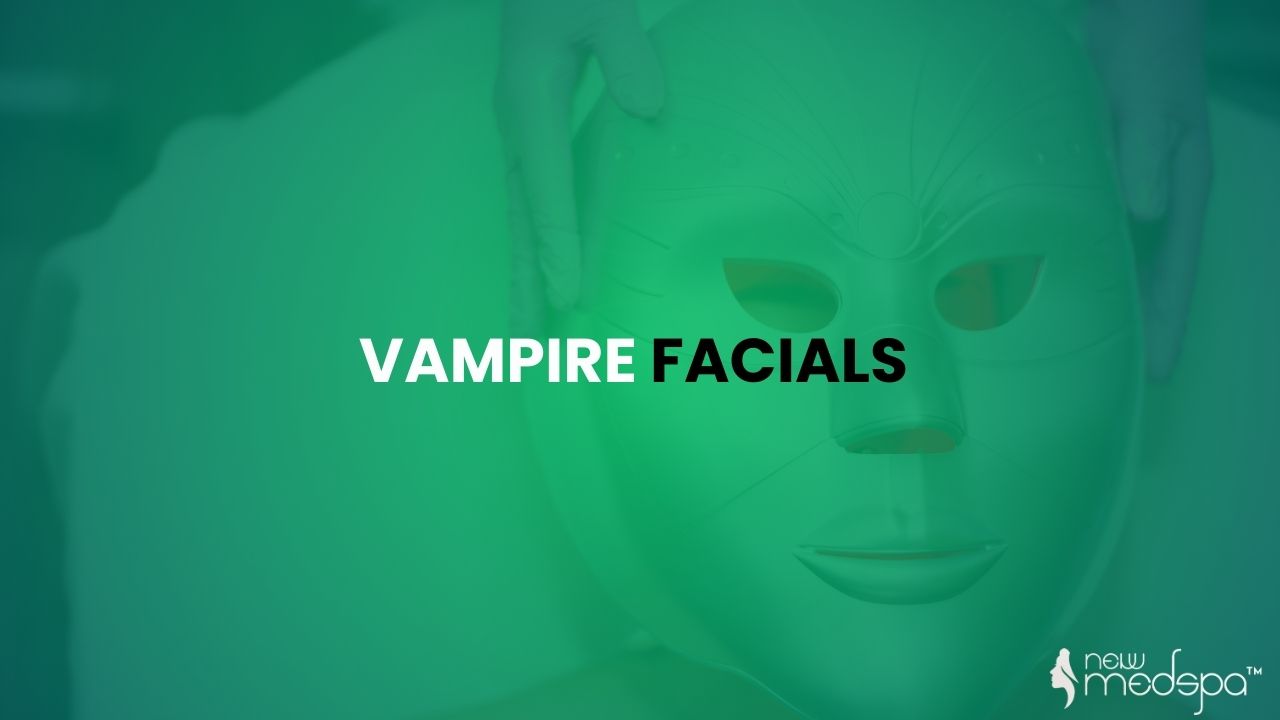
The Vampire Facial, made famous by reality television stars and beauty influencers, is a lot less scary than its naming would have you believe and it’s not just for celebrities. This cutting-edge skin treatment, also called microneedling with platelet-rich plasma (PRP), is performed by drawing a small amount of blood from the patient, isolating the platelets, and then applying the nutrient-rich plasma back onto the skin. This process promotes your body’s own healing response, which can result in improved skin tone, diminished fine lines, and a healthy glow. The Vampire Facial might seem like a treatment that is only available to the rich and famous, but in fact it is a widely available (and popular) non-surgical skin rejuvenation treatment. Restore skin texture, promoting the body’s natural healing processes. Instead of relying on artificial fillers or harsh chemicals to achieve results, the Vampire Facial utilizes the body’s own resources to stimulate collagen production, improve elasticity, and encourage cell turnover. [Read More: 9 Best Non-Surgical Anti-Aging Treatments]As one of the safest and effective anti-aging treatments available, this non-invasive treatment is perfect for anyone who wants to instantly refresh their skin, without turning to synthesized ingredients or invasive surgeries. Whether you’re looking to treat acne scars, sun damage, or simple skin aging. What are Vampire Facials? Vampire Facials, technically known as Platelet-Rich Plasma (PRP) Therapy, is an advanced skincare process which uses the body’s own healing ability to revitalize the skin. The process entails drawing a small amount of blood from the patient, spinning it for platelet-rich plasma, which is then microneedle back into the skin. It encourages the creation of collagen, smoothness of skin, and skin turnover when used together. What are the benefits? Vampire facials treatments come with plenty of benefits they boost skin cell turnover and improve skin tone and texture. Microneedling with PRP will benefit reducing fine lines and aging signs as well. This treatment is particularly beneficial for those who along with being sufferers of acne may have acne scars or skin damage caused due to prolonged exposure to the sun. What is the process? The first step is that initial blood draw, which is fairly painless. Your blood is then put into a centrifuge that separates the plasma and platelets from the red blood cells. A topical numbing cream is applied to the face before the microneedling part of the treatment so that the needling doesn’t hurt. After the numbing cream has set and the microneedling has been performed, the PRP is massaged into the skin. For optimally best results, allow PRP to remain on skin the remainder of the day. Patients will present with dry, red, sensitive skin, similar to a light sunburn for a few days post-treatment. The Science Behind Vampire Facials PRP is full of growth factors that help repair and regenerate cells and tissue. PRP applied to the skin causes the body to heal itself which creates a fresher, firmer and more youthful appearance. A pivotal step in the process is microneedling, which causes micro-injuries to the skin that not only allows the PRP to penetrate deeply, but also improves the efficacy of the treatment. Because of its scientific backing, the Vampire Facials are effective treatment for skin concerns, and a popular procedure in the beauty industry. Who Can Benefit from a Vampire Facial? The Vampire Facials are suitable for individuals looking to improve skin texture, reduce signs of aging, or enhance their overall complexion. It is particularly beneficial for those with: Are There Any Side Effects? PRP is the product of the patient’s own blood, allergic reactions and side effects are rare and minimal. Some temporary redness, swelling, or bruising can happen but usually goes away within a few days. It’s a relatively safe procedure with a very low risk, so it’s a popular choice among people seeking effective skin rejuvenation without the side effects associated with chemical treatments. How Long Does Vampire Facial Last For? The majority of skin specialists advise having one Vampire Facials every 4 to 6 weeks to achieve the best outcome. Also, a course of 3 – 4 treatments are generally recommended depending on the condition and desired outcome. Regular maintenance with Vampire Facials over time can help maintain hair in better condition, meaning it pairs well with any treatments you may already be implementing in your skincare routine. Conclusion A Vampire Facials is a new-age skincare treatment that uses the natural healing process of your body. With bonuses such as collagen stimulation, skin rejuvenation and little-to-no downtime, it’s no wonder this procedure’s been a staple amongst beauty junkies. The Vampire Facial might be just the non-surgical answer to looking youthful and healthy. The Vampire Facial has been making waves, and because of its miraculous skin benefiting powers, it is also one of the most sought-after procedures for individuals looking for long-term, dewy skin.

